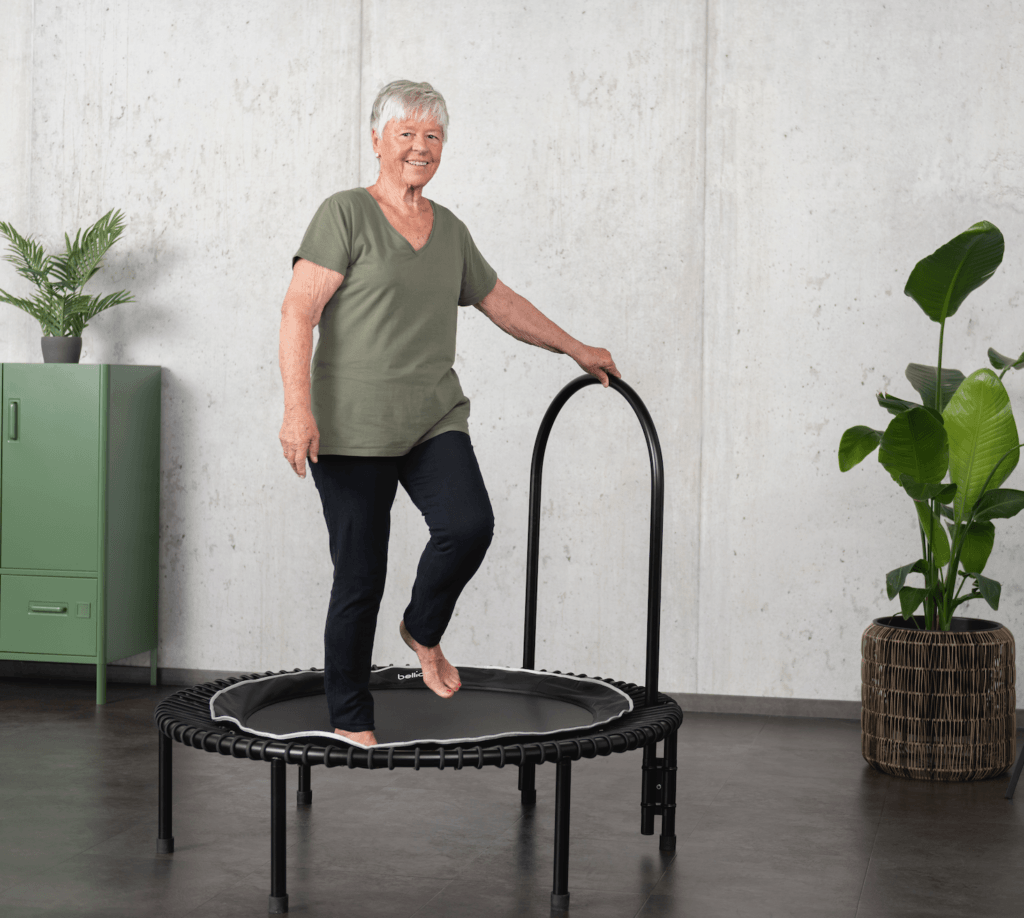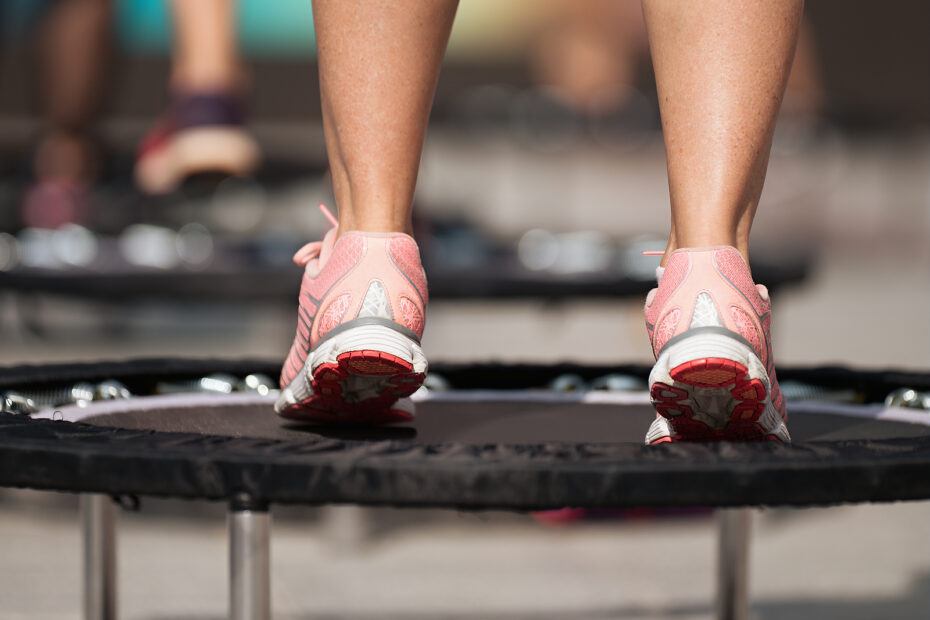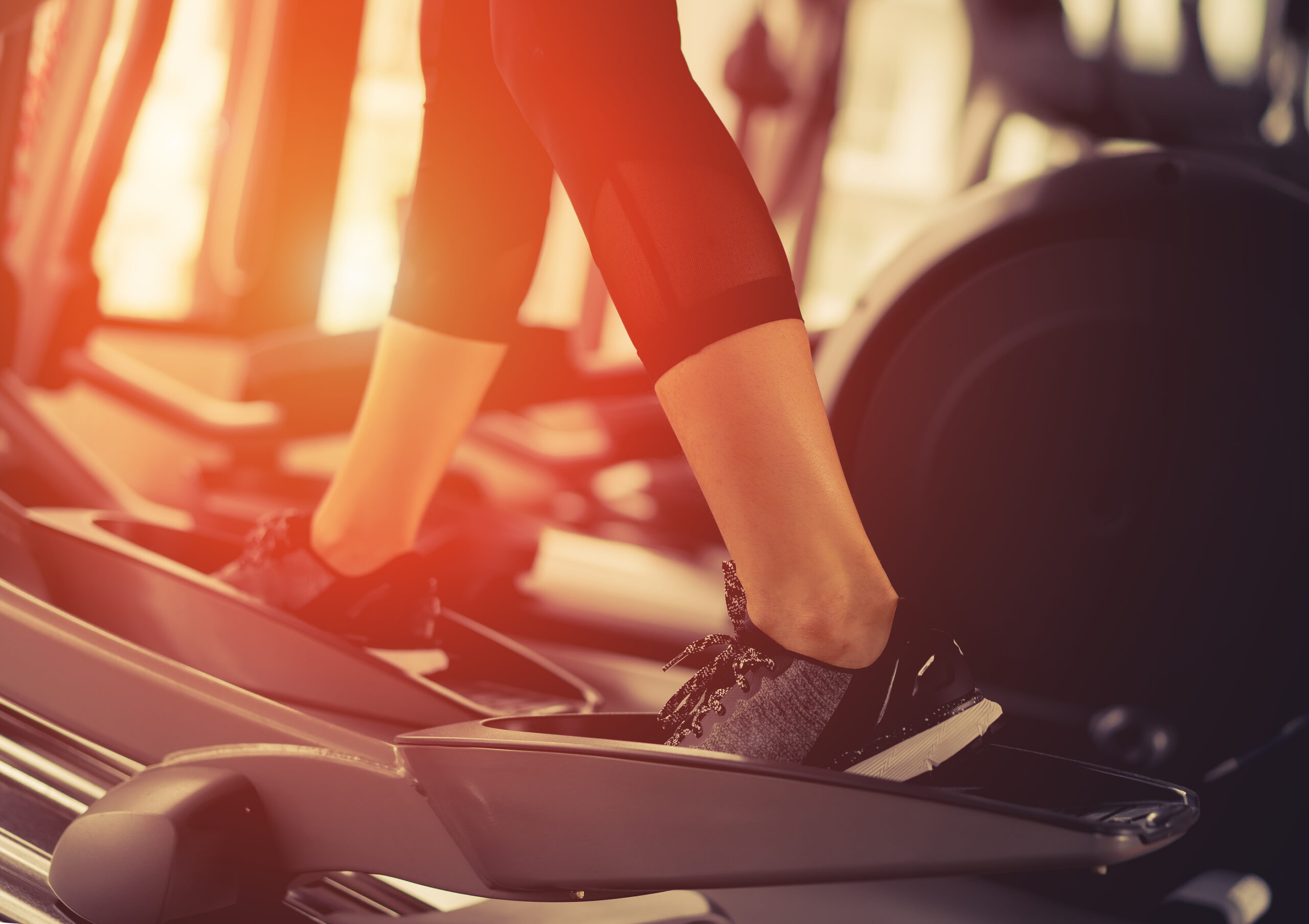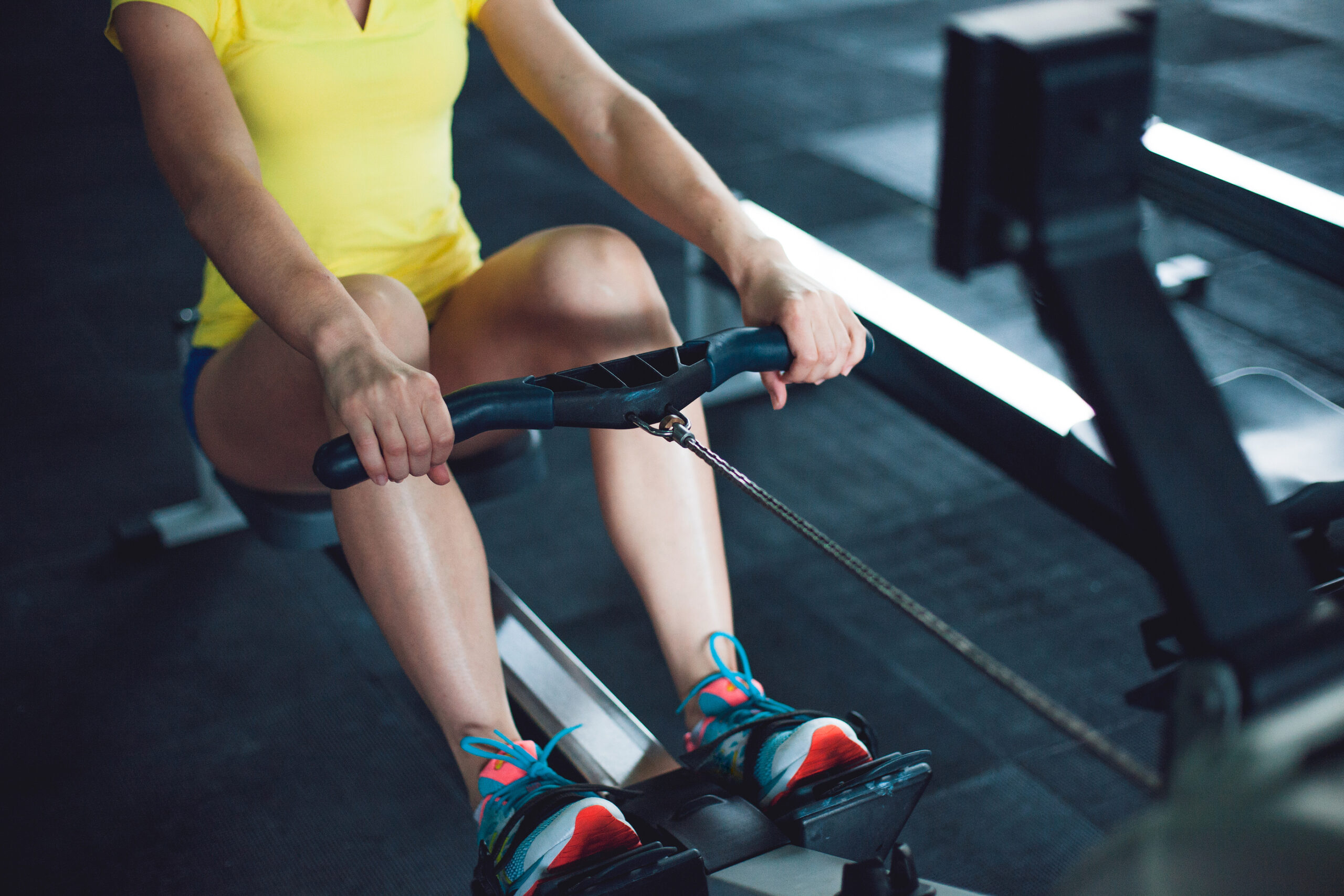Rebounders, also known as mini-trampolines, have been around for a long time and have gained popularity as a fun and effective way to exercise.
Bouncing on a rebounder is more of a workout than it may seem and can offer several perks.
They can provide a low-impact cardiovascular workout that improves balance, coordination, and strength, but they can also be a lot of fun.
But are rebounders safe for seniors?
Honestly, that depends entirely on the fitness/mobility level of the senior in question (sorry, there’s no one size fits all answer to this question).
But using a rebounder can be a safe form of exercise for seniors that have the mobility and balance necessary to use them safely.
Given the unique needs of older adults though, it’s important to understand the risks and benefits before incorporating a rebounder into a fitness routine.
And that’s exactly what we’ll be going over in this guide.
But first, let’s make sure we’re all talking about the same thing…
What Are Rebounders?
Rebounders are small, sturdy trampolines designed for fitness rather than acrobatics.
Unlike larger trampolines, rebounders are typically only 3 to 4 feet in diameter and close to the ground.
They offer a gentle bounce that’s less intense than traditional trampolines, making them an appealing option for low-impact exercises.
Some come with attachable handlebars, giving folks something to hold on to while exercising, others don’t (seniors may want to consider a rebounder that does have a handle for added safety).
Benefits of Using Rebounders for Seniors
When used correctly, rebounders can offer several health benefits that are particularly valuable for seniors.
Here’s how rebounder workouts can support healthy aging:
Low-Impact Exercise
Rebounding is a gentle form of exercise that’s easy on the joints.
The soft surface of the mini-trampoline absorbs much of the impact, making it a good option for seniors with arthritis or joint pain.
It allows for cardiovascular exercise without the pounding on the knees, hips, and back that can occur with walking or running on hard surfaces.
Improved Balance and Coordination
Maintaining balance becomes more challenging with age, but rebounder exercises can help.
The subtle movements required to stay stable while bouncing engage all kinds of muscles you didn’t know you had and this can certainly help improve coordination.
Over time, this can help improve stability and reduce the risk of falls, which are a major concern for older adults.
Cardiovascular Health
Rebounding provides a light-to-moderate aerobic workout which can get your heart rate elevated and your lungs working.
Which can help seniors improve heart health, increase endurance, and lower blood pressure.
For those who may find walking or other forms of aerobic exercise difficult or monotonous, bouncing on a rebounder offers a fun and engaging alternative.
Enhanced Muscle Strength
Rebounding works multiple muscle groups, including the legs, core, and even the arms when performed with a handrail.
I remember the first time I went jumping at our local trampoline center with the kids – wow, I couldn’t believe how sore I was.
And not just my legs, but more core and shoulders too.
Anyway, strengthening these muscles can improve overall mobility and support daily activities, helping seniors maintain their independence.
Lymphatic Drainage (Maybe)
One possible benefit of rebounding is its effect on the lymphatic system.
The rhythmic bouncing motion may help stimulate lymphatic circulation, which could help remove waste products and toxins from the body.
This process could help support immune function and overall health, which could be helpful for seniors as immune response tends to weaken with age.
That said, there isn’t a lot of research supporting that jumping on a rebounder actually improves lymphatic drainage.

But Are Rebounders Safe for Seniors?
While rebounders can offer many benefits, safety is a key consideration for seniors. Here are some potential concerns and risks to be aware of:
Balance Issues
While rebounders can improve balance, they also require a good deal of balance to use safely.
For seniors who have significant balance issues or are prone to falls, the unstable surface may be too dangerous.
Seniors should start with simple movements and consider using a rebounder that comes with a stability bar or handrail for added support.
Risk of Falls or Injuries
As with any physical activity, there’s a risk of injury, particularly falls.
If a senior loses balance on the rebounder or steps off incorrectly, they could suffer a sprain, strain, or even a more serious injury like a fracture.
Choosing a rebounder with a stable, non-slip surface and using it in a clear, open space can help reduce these risks.
Overexertion
While rebounding is low-impact, it can still be challenging for seniors who are new to exercise or have certain health conditions.
Seniors should listen to their bodies, start slowly, and avoid pushing themselves too hard.
Overexertion can lead to fatigue, dizziness, or even cardiovascular problems in vulnerable individuals.
Safety Tips for Seniors Using Rebounders
To safely incorporate rebounding into a fitness routine, seniors should follow these guidelines:
1. Consult with a Doctor
Before starting any new exercise program, seniors should consult with their healthcare provider.
This is especially important for those with chronic conditions such as heart disease, arthritis, or osteoporosis.
A doctor can advise on whether rebounding is appropriate based on individual health needs.
2. Start Slow
Beginners should ease into rebounding by starting with short sessions, such as 5 to 10 minutes of light bouncing.
Focus on gentle movements like “health bouncing,” where the feet remain in contact with the trampoline while the body experiences a mild bounce.
Over time, as strength and confidence increase, seniors can gradually extend the duration and intensity of their workouts.
3. Use a Stability Bar
Many rebounders come with optional handrails or stability bars, which provide extra support.
These bars can help seniors maintain their balance and feel more secure while bouncing.
For those new to rebounding or with balance concerns, using a stability bar is a smart choice.
Using a handrail also makes it a lot safer to get on/off the rebounder.
4. Use a Spotter
If you’re not confident with your ability to safely get on or use a rebounder, it’s a good idea to have a friend or family member nearby to make sure no accidents happen.
A spotter can help guard while getting on/off the rebounder, but they can also be nearby to ensure you don’t lose your balance while exercising.
Over time, you may become more confident with your abilities and may no longer need this extra assistance.
But remember, it’s always better to be safe than sorry!
5. Wear Proper Footwear
It’s important to wear shoes with good support and grip while using a rebounder.
Athletic shoes with cushioned soles can help prevent slipping and provide additional support for the feet and ankles.
Barefoot bouncing can be risky for seniors, as it may lead to slips or discomfort.
6. Ensure a Safe Environment
Make sure the area around the rebounder is free of obstacles.
Clear away any furniture, rugs, or other items that could be tripping hazards.
Place the rebounder on a stable, non-slip surface, such as a mat or carpet, to prevent movement during use.
7. Stay Hydrated and Rest as Needed
As with any exercise, it’s important to stay hydrated and take breaks when needed.
Seniors should listen to their bodies and stop immediately if they feel dizzy, fatigued, or experience any pain.
When to Avoid Using a Rebounder
While rebounders are generally safe for many seniors, there are situations in which they may not be appropriate:
- Severe balance issues: For seniors with significant balance problems or those who frequently experience dizziness/vertigo, a rebounder may not be the safest option.
- Chronic pain or joint issues: Seniors with severe arthritis, hip, knee, or back pain should consult their healthcare provider to ensure rebounding won’t exacerbate these issues.
- Heart conditions: Those with certain cardiovascular conditions should get clearance from their doctor before engaging in aerobic activities like rebounding.
Final Thoughts
Rebounders can be a fun and low-impact way for seniors to stay active, improve balance, and boost cardiovascular health.
But that doesn’t mean they are appropriate for everyone.
Again, safety should always come first.
In order to use a rebounder safely, you have to be comfortable with stepping up on a compliant surface and maintaining your balance while actively moving.
Even with a handrail, using a rebounder still requires a certain degree of stability and control – so if this control is lacking, it’s probably not a good idea to try this.
But if you have fair balance and no significant mobility issues, a rebounder could be a great idea.
Remember to start slow and use a spotter if necessary – and don’t be surprised if you feel muscle soreness in new places after your first workout.
As with any other exercise, the key is to listen to your body, stay mindful of your abilities, and prioritize safety.
When used correctly, rebounders can be a valuable addition to a senior’s fitness routine, helping them stay active, independent, and healthy.



